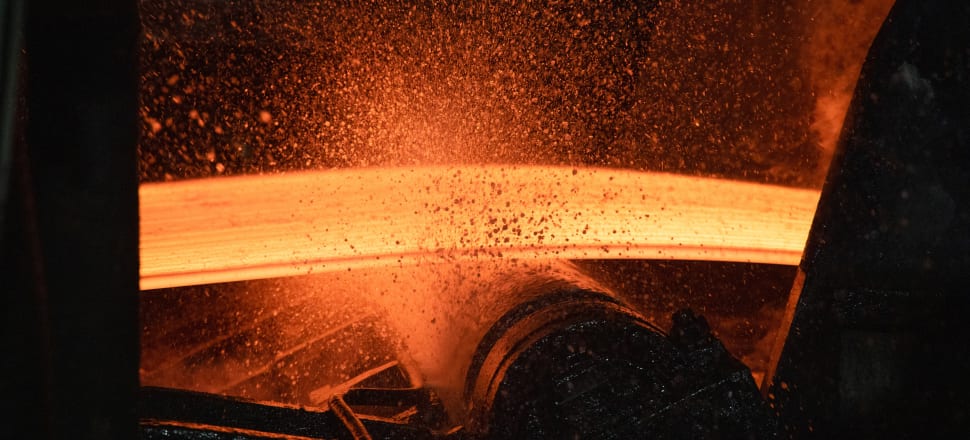
The Government has yet to make key decisions about how the steel mill's $100 million annual carbon subsidy will change as it decarbonises, Marc Daalder reports
The $140 million government grant announced recently to help New Zealand Steel decarbonise about half of its operations has placed renewed focus on the other carbon subsidy the mill already receives.
Every year, New Zealand Steel gets upwards of two million free carbon units from the Government to help cover its costs under the Emissions Trading Scheme (ETS). In total, they have a value of more than $100 million at current prices.
The scheme is meant to ensure big emitters aren't rendered uncompetitive by the carbon price when they sell their products overseas, but the free allocation hasn't dialled down as businesses have cut emissions. That means many businesses receive far more credits than they actually emit, even though the allocation is only supposed to represent a portion of their overall emissions.
READ MORE: * Govt offers NZ Steel $30m more in bonuses for bigger, faster emissions cuts * Vested interests have knee-capped the Emissions Trading Scheme
For NZ Steel, the over-allocation in recent years has likely been worth tens of millions of dollars.
The Government is pledging to fix this issue, with legislation in front of a select committee in Parliament right now. But Coal Action Aotearoa says big subsidies to companies like NZ Steel outside of the ETS should raise further questions about the necessity of free allocation at all.
"New Zealand Steel has received more free allocations of emission reduction units under the Emissions Trading Scheme than any other industry, to the tune of millions. [Subsidising the new furnace] is a far better use of taxpayers' money than throwing big overseas-owned industries like NZ Steel money to pollute," spokesperson Tim Jones said.
"This announcement shows how absurd and damaging it is that we continue to pay big industries to pollute by giving them free allocations of carbon credits. If we ended those free allocations, more industries would be incentivised to decarbonise and the taxpayer wouldn’t have to subsidise them to do it."
In theory, as the steel mill cuts emissions with its new electric furnace, its allocation should decrease as well. But the technical nature of the ETS means it may not be as clear-cut as that. Two big decisions need to be made about how to treat NZ Steel under the ETS once the furnace is operating, but Climate Change Minister James Shaw said the Government is still working on the detail.
The first is whether the overall number of units available in the ETS should be reduced in line with the expected emissions cuts by NZ Steel. If they aren't, the credits would theoretically be available for other emitters to use or stockpile.
"This is still a work in progress. Officials are currently working on it within the strict rules of the ETS legislation. I will be able to say more towards the end of the year once it is finalised," he told Newsroom.
However, Shaw expects the free allocation for steel-making to fall significantly.
"This year's NZ ETS settings remain unchanged, but I would expect the amount of allocated NZUs to NZ Steel to be significantly reduced once its new electric arc furnace is up and running."
The second issue is how the electric furnace will be treated for the purposes of free allocation. There are already mechanisms for issuing free credits for electric arc furnaces, because one used to be used by Pacific Steel prior to its acquisition by NZ Steel. Importantly, that furnace was older and probably much less efficient than the new one the steel mill will have installed. If it were allocated credits based on the old estimates, that would almost certainly lead to over-allocation.
"This will be developed over the coming months," Shaw said, when asked about the treatment of the new furnace.
In the meantime, the smelter's significant carbon subsidy will continue to attract the ire of activists. Shaw didn't say whether Cabinet had considered the sizeable subsidy when determining whether to grant an additional $140 million for the new furnace.
"The Government’s decision was based on multiple factors," he said. "This included analysis of the huge emissions reductions the funding could potentially unlock, the likelihood of achieving the emissions reductions without it, and the excellent value for money."







